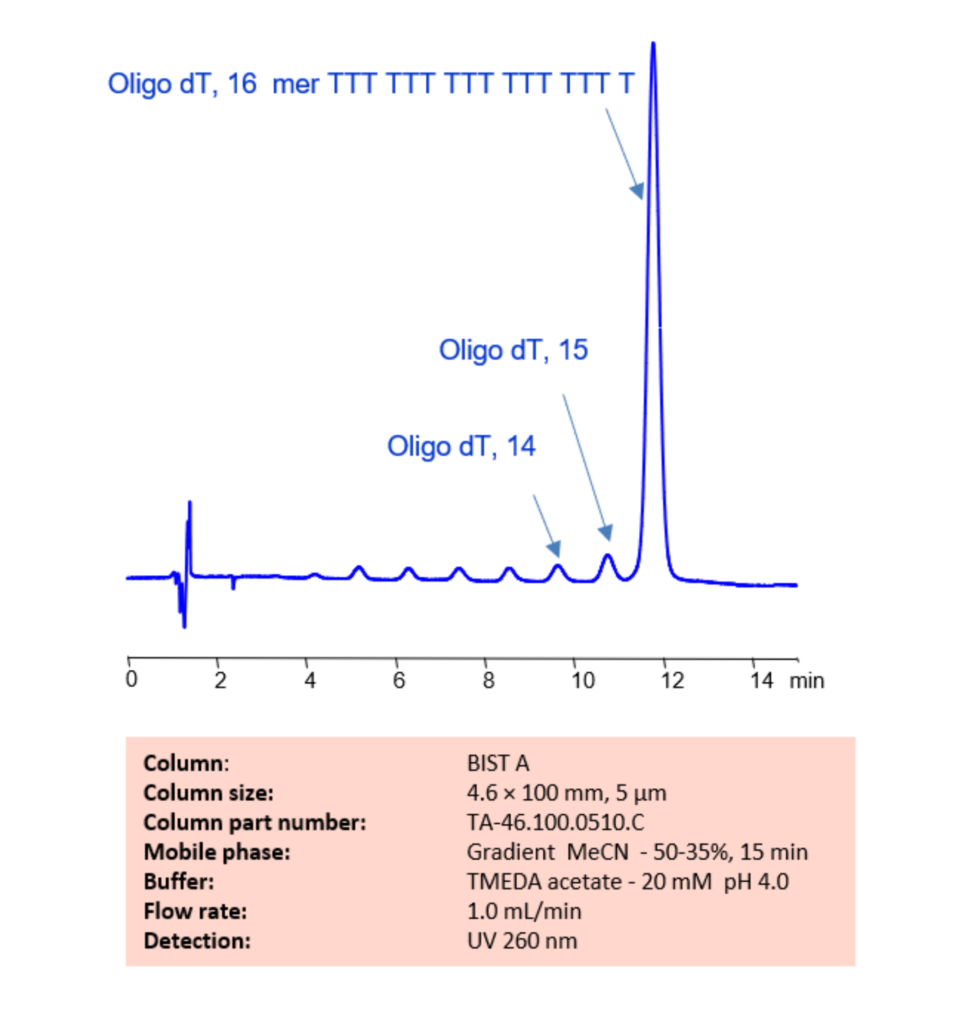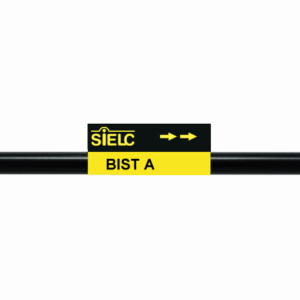Separation type: Bridge Ion Separation Technology, or BIST™ by SIELC Technologies
HPLC Method for Analysis of Oligonucleotides on BIST A Column by SIELC Technologies

High Performance Liquid Chromatography (HPLC) Method for Analysis of Oligonucleotides
16 T oligonucleotides are short DNA molecules that consist of 16 thymine (T) nucleotides. They are commonly used in research and diagnostic applications, such as PCR (polymerase chain reaction), DNA sequencing, and gene expression analysis.
The sequence of a 16 T oligonucleotide is specific and unique, allowing it to be used as a primer or probe to target a specific DNA sequence of interest. When used in PCR, 16 T oligonucleotides can anneal to the complementary single-stranded DNA template and serve as a starting point for DNA polymerase to extend the DNA sequence.
Additionally, 16 T oligonucleotides have been used in the design of biosensors and other diagnostic tools due to their high specificity and sensitivity. They can also be modified with different chemical groups to enhance their stability and binding affinity.
Overall, 16 T oligonucleotides are valuable tools in molecular biology and genetics research, enabling scientists to amplify, sequence, and detect specific DNA sequences with high accuracy and precision.
Using SIELC’s newly introduced BIST™ method, this oligonucleotide can be retained on a negatively-charged, cation-exchange BIST™ A column. There are two keys to this retention method: 1) a multi-charged, positive buffer, such as TMEDA formate, which acts as a bridge, linking the negatively charged dye to the negatively-charged column surface and 2) a mobile phase consisting mostly of organic solvent (such as MeCN) to minimize the formation of a solvation layer around the charged analytes. Using this new and unique analysis method, oligonucleotide can be separated, retained, and detected at 260 nm.
Please read more on oligonucleotides analysis by HPLC in our April’s 2023 newsletter.
Condition
| Column | BIST A, 4.6 x 100 mm, 5 µm, 100 A, surface coated |
| Mobile Phase | Gradient MeCN – 50-35%, 15 min |
| Buffer | TMEDA acetate pH 4.0 – 20 mM |
| Flow Rate | 1.0 ml/min |
| Detection | UV 260 nm |
Description
| Class of Compounds | Oligonucleotides |
| Analyzing Compounds | Oligonucleotides |
Application Column
BIST A
Column Diameter: 4.6 mm
Column Length: 100 mm
Particle Size: 5 µm
Pore Size: 100 A
Column options: surface coated





